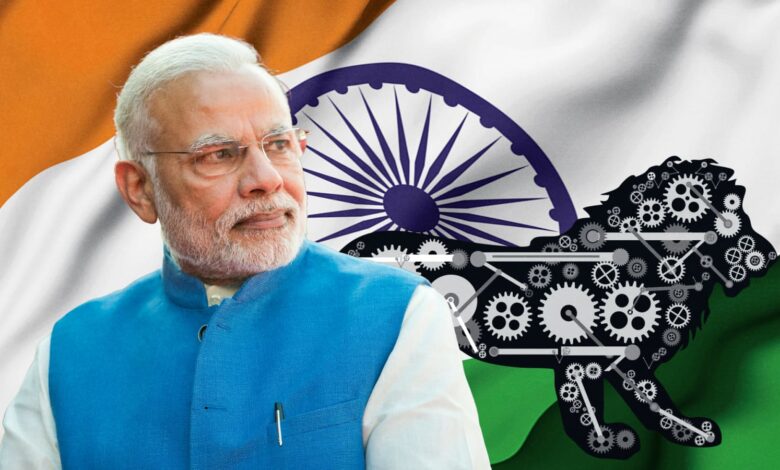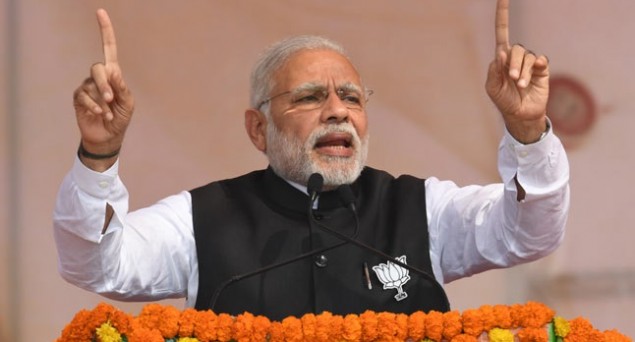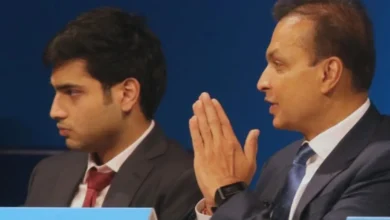India’s Biggest Worry, Unemployment, Reuters Poll; How Modi Govt Has Failed To Address The Critical Issue Amid ‘White Washing’; Where Are Our Jobs?
What has been a consistent story under the shadow of rapid growth is India's persistent unemployment problem. Against the backdrop of the Bharatiya Janata Party's (BJP) promises of job creation upon assuming power in 2014, we examine how the nation is massively struggling to generate employment opportunities proportional to its expanding young workforce.

India may have achieved the tag of the fifth largest economy in the world (by nominal GDP), but has it trickled into reality? If one were to ponder what the toughest challenge staring straight in India’s face is, it would be Unemployment!
The same has been found to be true, according to economists polled by Reuters, who expected the world’s most populous country to grow a healthy 6.5% this fiscal year, yet the biggest economic challenge for the government after the ongoing election is to address the critical question of unemployment.
Despite experiencing the most rapid growth compared to other major economies, India has struggled to generate adequate employment opportunities for its vast and continually expanding young populace.
This issue is emerging to be a primary concern for citizens amidst the process of electing the forthcoming government.
)
What The Poll States
In an April 16-23 Reuters poll,
—a significant majority of economists, 15 out of 26, identified unemployment as the foremost challenge facing the government post-election.
—Rural consumption was highlighted by eight economists,
— two cited inflation, and
—one mentioned poverty as significant concerns.
Kunal Kundu, an economist specializing in India at Societe Generale, remarked on the decline of India’s Labour Force Participation Rate (LFPR) compared to that of the four Asian tigers, attributing it to a decade of nearly stagnant job growth.
He expressed apprehension regarding the Bharatiya Janata Party’s (BJP) emphasis on existing employment sectors such as infrastructure, manufacturing, and government jobs, which have thus far failed to substantially address the issue.
Kundu warned that without a more comprehensive strategy, India risks forfeiting potential demographic dividends.

BJP’s Failed Promise
Despite the Bharatiya Janata Party’s assurance to bolster job creation upon assuming office in 2014, recent years have shown scant progress in alleviating unemployment.
Data from the Periodic Labour Force Survey indicates a marginal decrease in the unemployment rate from 3.4% in 2013-14 to 3.2% in 2022-23.
However, according to the Centre for Monitoring Indian Economy, the unemployment rate surged to 7.6% in March.
While job creation remains sluggish, the government’s increased capital expenditure propelled the economy to a faster-than-expected growth rate of 8.4% in the October-December quarter.
Projections suggest the economy likely grew by 6.5% in the last quarter and by 7.6% in the previous fiscal year ending on March 31.
Forecasts indicate growth rates of 6.5% and 6.7% for the current and subsequent fiscal years, respectively, remaining largely unchanged from the previous month.
Alexandra Hermann of Oxford Economics cautioned against assuming a repeat of the robust growth seen in 2023, citing constraints on fiscal spending.
However, signs of the economy’s resilience persist into the early months of 2024, suggesting potential for continued strength.
Despite concerns, institutes such as the International Monetary Fund have revised India’s growth forecasts upwards, indicating a favorable outlook.
A significant majority of economists, 20 out of 28, anticipate higher-than-expected economic growth for the fiscal year.
Additionally, while consumer price inflation was forecasted at 4.5% for this fiscal year and the next, a majority of economists, 19 out of 28, anticipate a higher inflation rate than currently predicted.

Answering The Critical Questions
Let us look at some facts – In an economy like ours where the workforce is not neatly divided into “the employed” and “the unemployed”, and instead there is a massive and growing casualisation of work, measuring unemployment is a tricky business.
The National Sample Survey (NSS) includes three distinct concepts – usual status, weekly status, and daily status.
However, the NSS faces conceptual challenges regarding its definitions and conducts its extensive sample survey every five years, with annual surveys based on significantly smaller samples, resulting in primarily annual data.
Consequently, researchers increasingly rely on figures provided by the Centre for Monitoring the Indian Economy (CMIE), an unofficial organization conducting monthly sample surveys (with urban surveys conducted weekly), querying individuals about their employment status on the survey date.
The unemployment rate, defined as the ratio of unemployed individuals actively seeking work to the total labor force (comprising both employed and unemployed individuals), may warrant scrutiny.
Nevertheless, CMIE consistently furnishes a dataset enabling trend analysis over time.
The Numbers
As of October 2023, CMIE data reveals a national unemployment rate of 10.05%, with rural and urban rates at 10.82% and 8.44%, respectively.
This overall rate surpasses the previous month’s 7.09%, marking the highest level since May 2021’s notable surge, primarily attributed to the Covid-19 lockdown enforced by the Narendra Modi government in 2020.
Therefore, discussions abound regarding the growing unemployment crisis. Yet, considering the perceptible monthly fluctuations in the estimated unemployment rate, an alternative interpretation of the CMIE figures warrants exploration.
Given the consistent fluctuations in the CMIE-estimated unemployment rate, a shift in focus towards a different aspect of the CMIE data to substantiate the escalating unemployment crisis, rather than solely relying on monthly rates, presents a rational approach.
According to the CMIE chief, India’s workforce, synonymous with the number of employed individuals, has remained stagnant at slightly over 400 million over the past five years, indicating a lack of employment growth.
In October 2023, alongside the significant rise in the unemployment rate, there was a sudden surge in the total labor force.
A straightforward calculation reveals that the absolute count of employed individuals remained unchanged compared to previous periods, explaining the sharp increase in the unemployment rate.
Hence, the stagnation in employment figures is a prevailing reality within the Indian economy in recent years.
This phenomenon also elucidates the escalating unemployment rate observed since 2019.
According to CMIE data, the unemployment rate, which stood at 5.27% in 2019, surged to 8% in 2020, maintaining levels of 5.98% and 7.33% in the subsequent two years before further increasing in 2023.
The uptick in the unemployment rate stems from the persistent stagnation in absolute employment figures despite an expanding labor force. This influx in the labor force, in turn, results from a growing working-age population without a corresponding decline in the labor participation rate.
Numerous analysts attribute this employment stagnation and subsequent rise in the unemployment rate to the economy’s incomplete recovery from the pandemic-induced downturn.
However, for this assertion to hold weight beyond mere circular reasoning, it must reference the real Gross Domestic Product (GDP).
While GDP recovery post-pandemic has indisputably been sluggish, contradicting the government’s claims of India being the world’s fastest-growing economy, this fact alone cannot wholly account for the stagnation in employment numbers.

How Rise In GDP Has Not Translated To Employment
For instance, compared to 2019, GDP in 2023 has surged by approximately 16% (assuming a 6% growth rate for 2023).
In nature, the Indian experience stresses the fallacy that accelerating the growth rate alone can mitigate unemployment; instead, the manner in which growth is fostered holds greater significance.
The stark stagnation in employment stems from a shift in the nature of growth over recent years, diverging from earlier trends and resulting in diminished job creation.
The small-scale and informal production sector, already struggling with challenges due to neoliberal policies withdrawing state support and exposing it to foreign competition, faced compounded difficulties with the Modi government’s demonetization and introduction of the Goods and Services Tax (GST).
Moreover, the stringent lockdown imposed in response to the Covid-19 pandemic inflicted further devastation upon this sector and its recovery from the collective crisis induced by these factors remains elusive.
Despite the broader economic resurgence in the post-Covid era, this sector, known for its high employment potential, continues to struggle, contributing to almost negligible employment growth.

BJP’s White Washing
Consequently, the array of economic strategies at the disposal of the ruling Bharatiya Janata Party government proves insufficient in fostering substantial employment growth.
These strategies primarily revolve around incentivizing capitalists to increase investment, thereby accelerating GDP growth.
However, these endeavors face two significant hurdles.
Firstly, in an oligopolistic market, investment hinges on projected demand growth.
Therefore, merely channeling funds to capitalists without addressing demand constraints fails to stimulate investment; instead, capitalists tend to retain the funds without expanding investment.
Furthermore, if the transfers to capitalists are funded by reducing government spending elsewhere to maintain fiscal deficit limits, the incomplete expenditure by capitalists leads to a net reduction in demand.
This contractionary effect dampens economic activity, undermining the intended objectives of the measures.
However, even if such transfers were to support capitalists’ investment and subsequently GDP growth, the sectors poised for this growth are not notably labor-intensive.
Government initiatives fail to prioritize sectors like small-scale and informal production, which are significant sources of employment in the economy.
Paradoxically, while offering tax incentives to capitalists ostensibly to stimulate employment, the government neglects to address the substantial vacancies within the public sector.
The purported rationale behind this omission is fiscal constraints, which are, in part, exacerbated by the tax concessions granted to capitalists.
Furthermore, amidst a rising unemployment rate, particularly evident in rural areas as indicated by October’s data, the government is reducing allocations to the Mahatma Gandhi National Rural Employment Guarantee Scheme (MGNREGS).
The BJP government’s clear bias towards the big wealthy has consistently led it to oppose MGNREGS, and it has, under various pretexts, attempted to dismantle the scheme, with allegations of corruption now serving as a fresh pretext for its curtailment.
The Last Bit, The CMIE data not only indicates the escalating unemployment crisis but also exposes the flawed logic of the BJP government’s approach to addressing unemployment.




